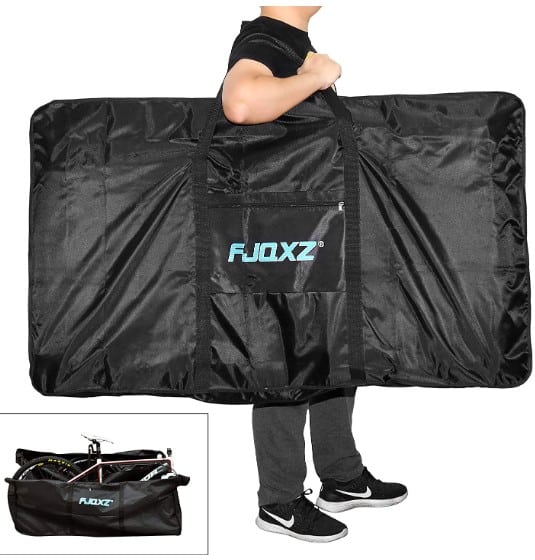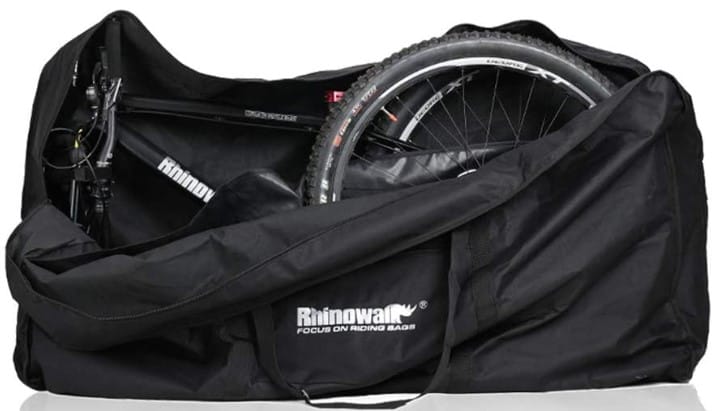The biggest concern for most bike buyers is the cost of transportation. While there are different ways to ships a bike, not all methods suit everyone. But first, how much does it cost to ship a bike?
On average, it cost about $50-$150 to ship a bike using a courier service like FedEx, $80-$210 by USPS, $40-$80 by train, $60 or more by bike shipping service, and up to $400 by plane.
Overall, the cost of shipping a bike depends on the method you opt for, how fast you want it delivered and the destination.
Note, however, that you’ll pay more for insurance if you choose the option.
I’ll break everything down for you to help you pick a method that’s convenient and affordable to you.
Let’s dive into it!

A Guide on How Much Does It Cost To Ship A Bike
Overall, the cost of shifting a bike depends on the method you choose.
Here are your options:
Method 1 – How Much Does It Cost To Send A Bike By Courier Service?
Two of the most popular courier (or international delivery services) are FedEx and UPS. Let’s look at their charges.
- FedEx
FedEx charges you $50-$150, depending on where you are. You’ll, however, pay more for insurance.
It usually costs $3 to insure a package worth $100-$300 and an extra $1 for every $100 above the $300 value.
- UPS
Depending on your preferred destination, it’ll cost you $100-$130 to ship a bike with UPS.
But just like FedEx, the cost doesn’t include insurance. So, you’ll have to pay more if you intend to insure the package.
Method 2 – How Much Does It Cost To Send A Bike By Post?
The cost of shipping a bike by post varies depending on the distance, bike weight, and postal service you choose.
If you go for the United States Postal Service (USPS), for example, it’ll cost you $80-$210 to ship a 20-pound package, depending on your destination.
So, if your bike weighs more than 20 pounds, which is often the case, you’ll pay for two boxes.
Overall, the maximum weight that you can ship by USPS is 70 pounds. That means you can transport most bikes as they fall under the weight limit.
You should note, however, that the prices don’t include insurance. If you wish to insure your bike when shipping it with USPS, you’ll incur an additional $10 for every $100 of the bike’s value.
If your bike is worth $2,000, for example, you’ll pay $200 for the insurance.
Click here to check UPSPS’s latest shipping charges.
Method 3 – How Much Does It Cost To Transport A Bike By Plane?
If you are looking for the fastest way to transport a bike, it has to be by plane. Depending on the distance, a 30-pound bicycle will cost you $50-$400 to ship within the U.S.
But if you ship internationally, it’ll cost you $500-$800, depending on destination.
Remember, however, that you can check in your bike as part of your luggage when on a flight. Such an option usually is cheaper if the airline allows you.

And More
Method 4 – How Much Does It Cost To Transport A Bike By Train?
Usually, the train is the cheapest way to transport a bike, regardless of its size. On average, it costs $40-$80 to ship a bicycle in the United States. The charges usually depend on the distance.
Method 5 – How Much Does It Cost To Transport A Bike Using A Bike Shipping Service?
You can also choose to ship your bike using a bike shipping service. These companies charge more, but they guarantee the utmost safety of the bike while on transit.
ShipBikes and BikeFlights, for example, charge $60 going up. Usually, the charges depend on the bike’s weight, size, and distance.
OvernightBikes, on the other hand, charges $99 for one-day bike deliveries within the U.S.
Though bike shipping services cost more, they usually are worth it as they help you disassemble, pack, and pick the bike.
Note that most bike shipping services employ services like FedEx and UPS to ship your bike. So, that also explains why they are costly.
But What Is The Cheapest Way To Ship A Bike?
Generally, here are some tips you can use to ship your bike cheaply:
- Use a smaller shipping container
Instead of going for oversize bicycle shipping containers, go for smaller ones. Remember, you’ll be taking the bike apart, and as long as the frame and wheels can fit in the container, everything else will.
- Take the bike on the plane
Some airlines allow you to bring a bike on board as luggage as long as you meet their specifications. So, if your bike is not heavier than 50 pounds, check with the airline to see if you can check it.
- Settle for basic shipping
Most bike shipping services have the basic shipping package, which usually is the slowest but cheapest option. So, if you don’t mind waiting for the bike for a few extra days, settle for basic shipping.
- Deflate the tires
By deflating the tires, you slightly reduce the wheel size, reducing the shipping cost.
How To Pack A Bike For Shipping
It’s important that you safely transport your bike. So, you have to pack it correctly.
My advice is that you use a bike shipping box. So, check the bike shipping box dimensions to ensure it can fit your bike.
A bike box like the Boxes First BFHD54828FOL Bike Box (View o Amazon) is spacious enough to carry most adult bikes.

Once you have the bike box ready, follow these steps to pack it:
- Disassemble the bike – remove the seat, wheels, handlebar, and pedals
- Wrap the parts with bubble wrap
- Put the frame in the box gently and then follow it up with the wheels
- Place the bubble-wrapped saddle, handlebars, and pedals
- Fill the empty spaces with bubble wrap to further cushion the bike components
- Remember that you can use old newspapers if you don’t have bubble wraps
- Now close the bike’s top part and secure it with a tape
You did it! Your bike is now ready for shipping.
Also Read: How Big is a Bike Box?
FAQs
1) How Much Is It To Ship A Bike?
Here’s a table that shows the estimates of shipping a bike by different methods, depending on the distance.
| Shipping Method | Estimated Shipping Cost |
| UPS | $100-$130 |
| FedEx | $50-$150 |
| Train | $40-$80 |
| Plane | Up to $400 |
| USPC | $80-$120 |
| ShipBikes/BikeFlights | Starting from $60 |
2) And How Much Does It Cost To Ship A Bike USPS?
Generally, it cost $80-$220 to ship a 20-pound bike by USPS internationally, depending on your destination.
If the destination is less than 150 miles, for example, it’ll cost you $80, but if the distance is about 151-300 miles, you’ll pay $101.70.
Mark you; you’ll incur an additional cost for the bike insurance if you choose to insure it.
3) How Can I Ship A Bike For Cheap?
You can ship your bike for cheap using any of these hacks:
- Pack your bike in a smaller bike box
- Check in your bike on a flight if you are allowed to do so
- Pay for the basic shipping, which usually is cheaper but the slowest
4) Can I Ship A Bike With UPS?
UPS allows you to ship your bike comfortably. Just visit your local UPS store to inquire about the shipping requirements and fulfill them before you can send your bike to them.
Depending on your preferred destination, you’ll pay $100-$130 for the bike shipping, excluding insurance.
5) And How Much Does It Cost To Ship A Bike With FedEx?
It cost $50-$150 to ship a bike with FedEx, depending on the preferred destination. The charges, however, don’t include insurance, which averages $3 for packages worth $100-$300.
6) Can I Ship Through USPS?
USPS allows you to shop your bike as a package. A 20-pound package costs $80-$210 to ship within the United States, depending on the preferred destination.
You’ll need up to two boxes to ship a bike in most cases unless it weighs less than 20 pounds.
7) How Do You Ship A Bike On A Plane?
Airlines usually accept bicycles in hard-sided and well-padded bicycle cases. Airlines also have size limits for shipping bikes.
So, confirm the requirements first before taking your bike on a plane.
Closing Thought
Now, you have a reference guide on how much it’ll cost you to ship a bike. So, use it to compare the various options and pick your most convenient method.
Remember, however, the shared prices are an estimate, which means they may not be the exact prices but will be something close.